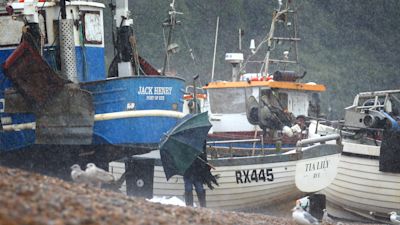What is line convection?

Let's face it, we're used to rain in the UK, but sometimes it can absolutely chuck it down for a few minutes and then seem to pass through, as if the atmosphere is trying to get something off its chest!
We know that as air rises it cools and this turns water vapour into liquid droplets that form a cloud. Eventually these droplets get so big that they fall from the cloud, and we seen this rain from two main sources; showers or fronts.
Showers are individual cells that vary in size, shape and energy, from a light afternoon shower on a summer's afternoon to a powerful and damaging thunderstorm.
Fronts (cold, warm and occluded) are associated with areas of low pressure and are much larger and longer bands of cloud and rain that form when massive wedges of air rise. Rain tends to last much longer, sometimes all day, and it's often windy too.
Cold fronts tend to be more active, producing heavier rain, and sometimes within a cold front there is a narrow band of very intense rain and gales. This is known as 'line convection' which develops due to a concentrated area of rapidly rising air that pumps loads more energy into the front. It rarely lasts longer than 15 to 20 minutes but it looks and feels stormy, and can often damage trees and buildings.
You can spot it on a radar image by the thin brightly coloured band. Once it's cleared winds ease and colder air follows, usually with a few showers too. A real force of nature and thankfully one that doesn't last for too long.